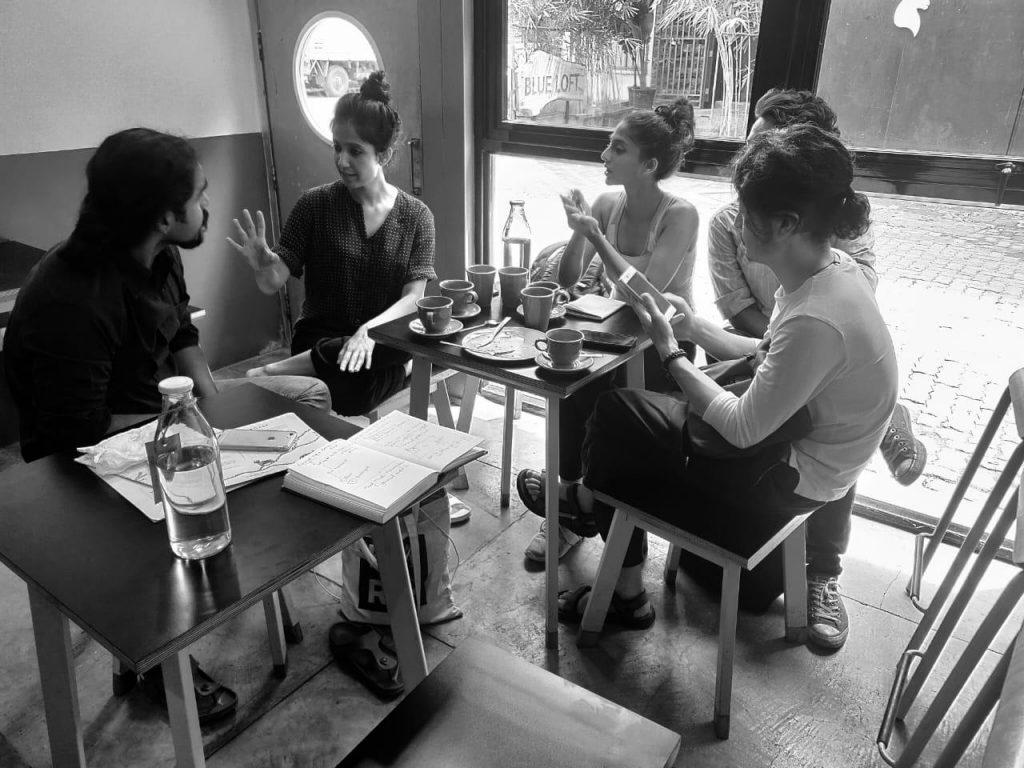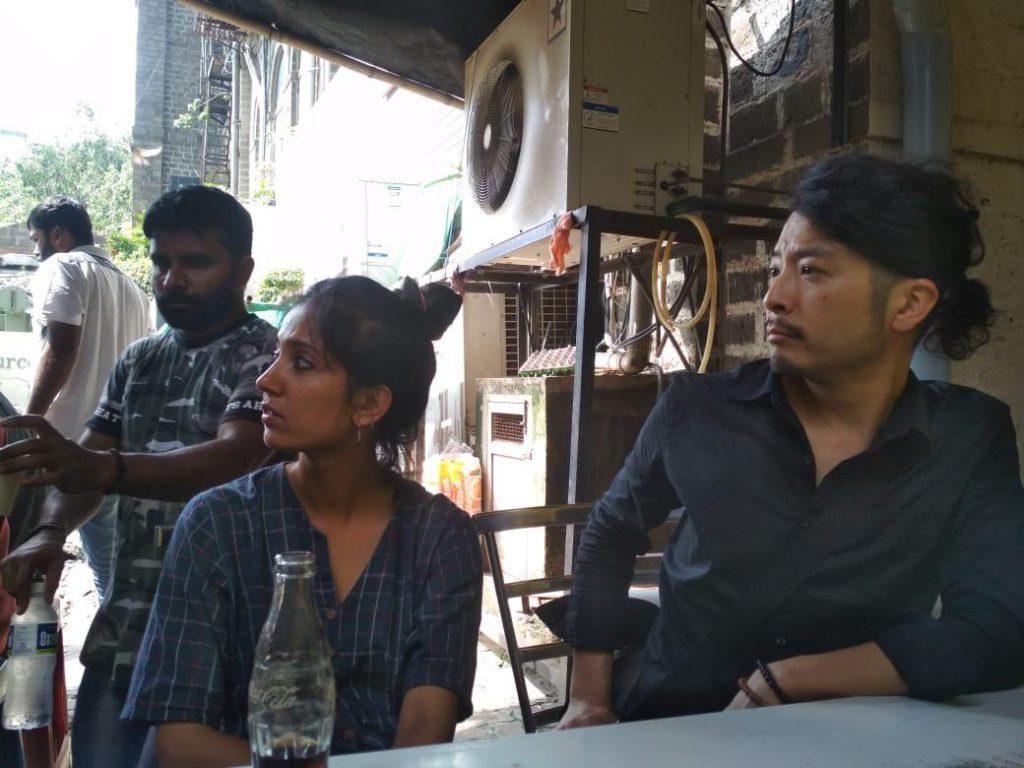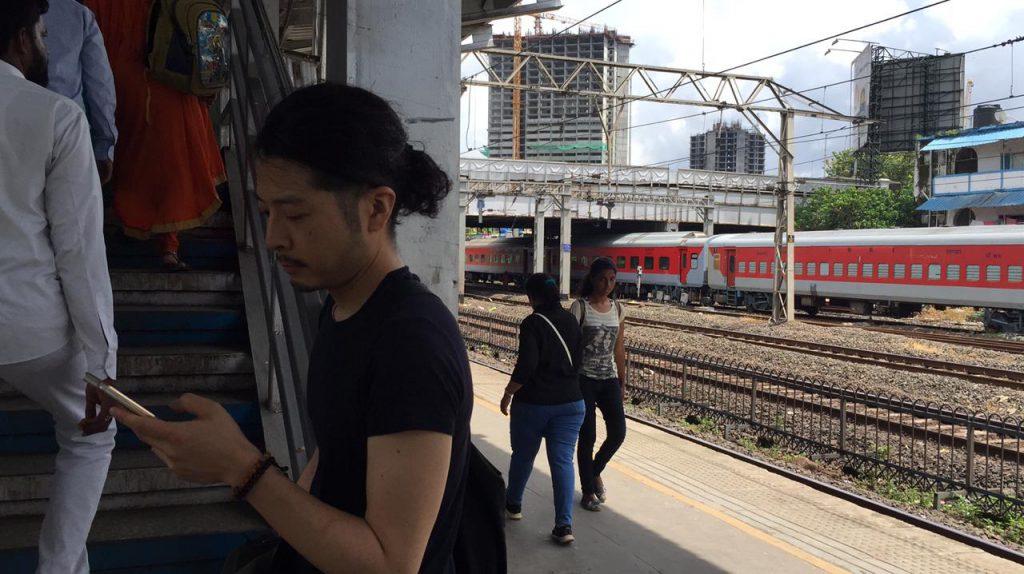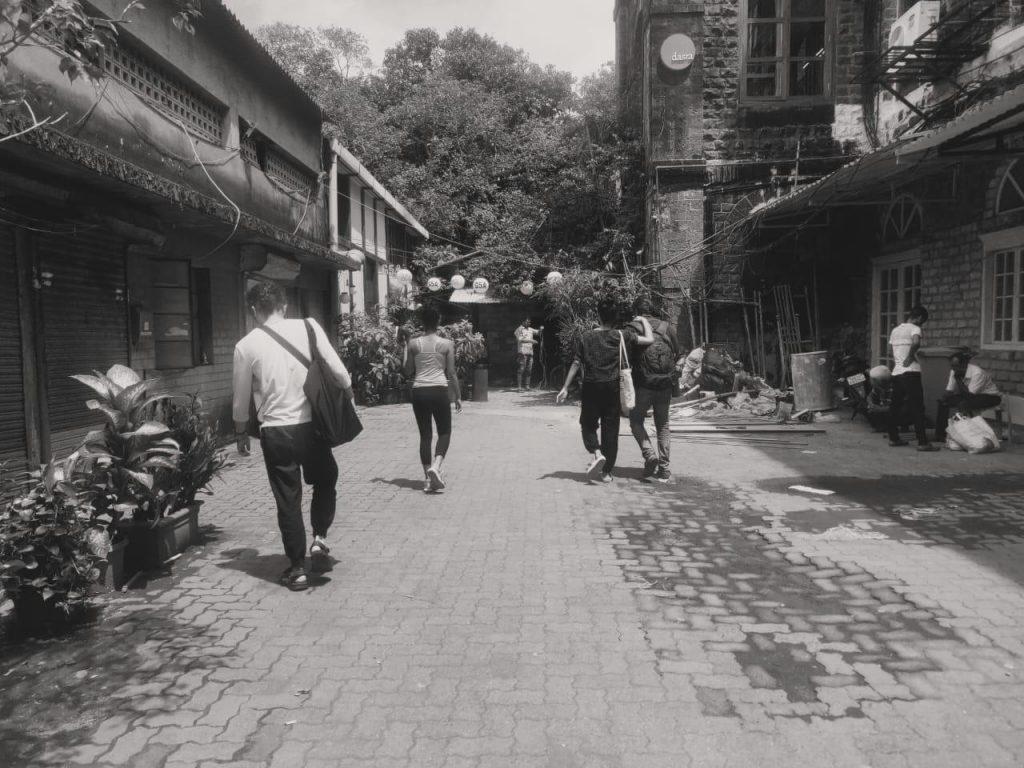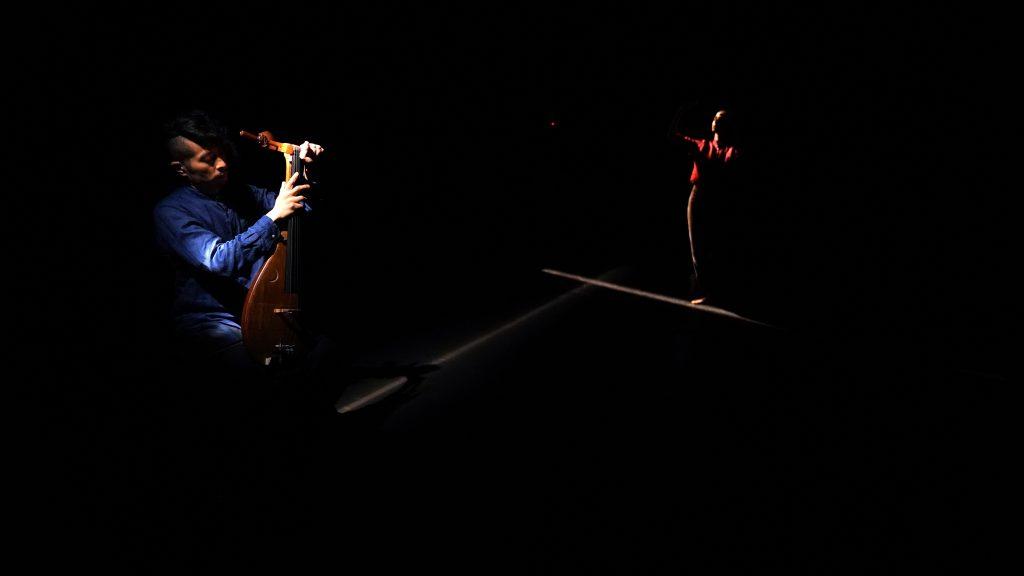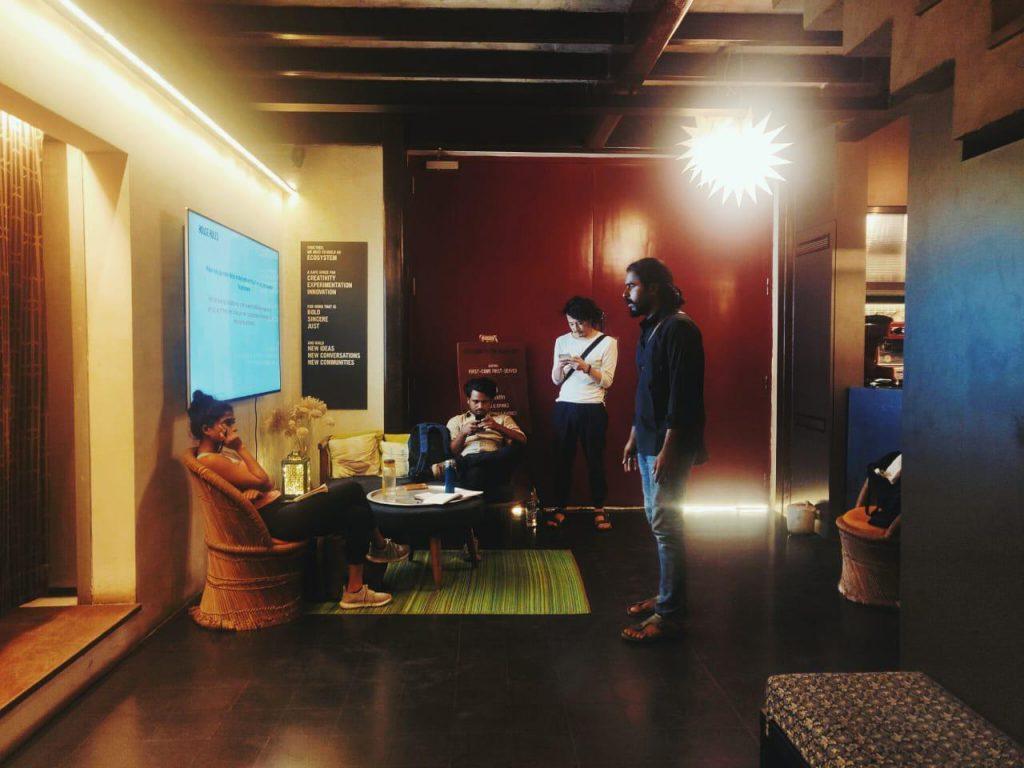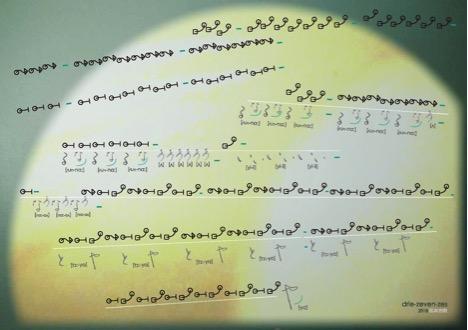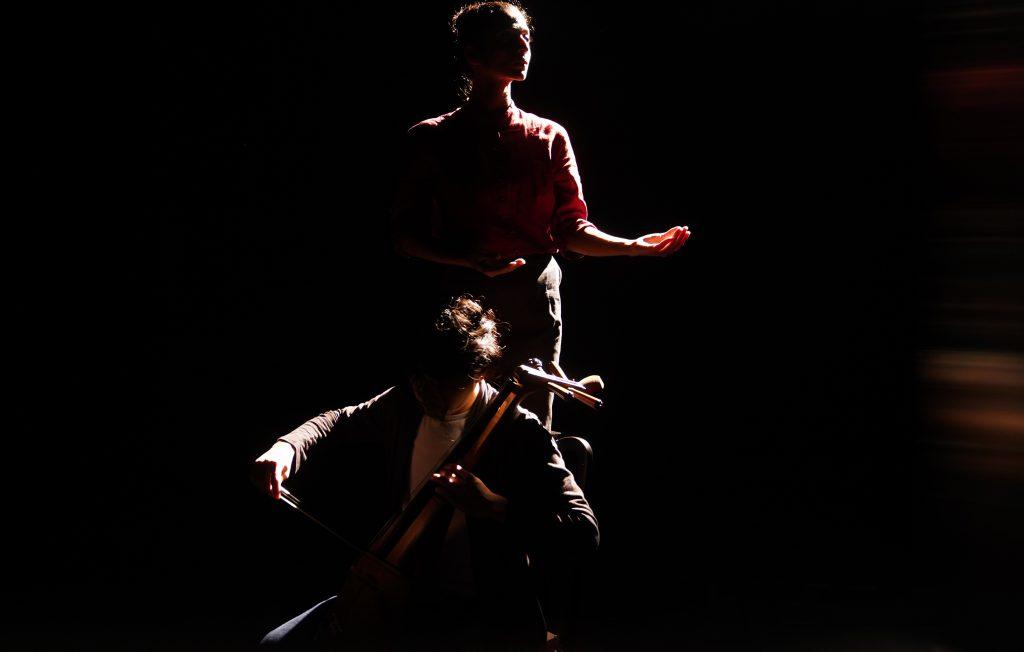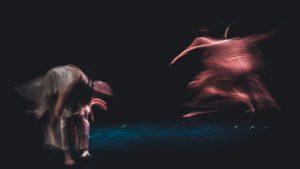in conversation with Sujay Saple and Mitsuaki Matsumoto
After a long day of rehearsals in the Black Box, Sujay and Mitsuaki finally catch a breath and sit down with us for coffee and chai at PORT.
Mitsuaki Matsumoto is an audio-visualist, visual artist, composer, sound performer, and scenographer from Nara, Japan. A lot of his work has involved developing audio and visual pieces, which have no particular direction, nor visible form, with the goal of giving spectators a physiological feeling. His solo work tries to create a ‘sensory space’ through different means, from acoustic to electric, from analog to digital, from stereo to surround. Talking about his practice and his foray into sound, he says he moved away from visuals to sound at a point where he realised that sound leaves more to the imagination and interpretation, while visual art is often imbued with traditional perceptions of the objects represented.
“With images there is always an attached meaning to an object,” He says, picking up a candle. “Like this cup – you see it and you know it’s a candle in a cup. The imagination stops there. So I switched to sound which is less obvious.” Mitsuaki prefers being known as a sound artist rather than a musician, saying “I never did music, I create soundscapes.” Having studied cinema, visual arts and installations, he initially started experimenting with abstract light, sound, and video installations. When it started to get difficult to present his work to an audience – as it always needed large galleries and heavy equipment – he switched to performance. “I wanted to work with more physical, abstract concepts – more sensory”, he says.
It’s Mitsuaki’s eighth visit to India – but first to Mumbai! He says, “I was quite excited. It’s big, it’s different.” He also enjoys sampling Indian cuisine (particularly poha), and has been taken in by the bustling city life.
This is not the first time that Mitsuaki and Sujay Saple – choreographer, director, designer and Artistic Director of Shapeshift Collective, a dance-theatre company based in Mumbai – are working together. In the past, they have worked together on a piece for the Odissa Biennale in Bhubaneshwar, and also with South African Choreographer, Moya Michael.
Mitsuaki says that it’s nice for him to come to India and explore different forms. “I get to do something different. I usually just play, or do a concert by myself. For me it’s an extension (of my practice) to work with like-minded choreographers and theatre artists – so I proposed to Sujay, ‘Let’s do something!” Their new piece, ‘Do You Want Me To Stay For Anything In Particular?’ is a unique sensory, immersive, sound and movement piece that seeks to explore themes of loss, absence and residues. It premiered at the G5A Black Box as part of our new Season’s Performance Long Runs this October!
As Sujay enjoys his masala chai with the delectable bun maska at our cafe, he shares what brought him and Mitsuaki together once again – “I think for both of us it was our attraction and interest in a formal, abstract art making process. We’re both not straight, linear narrative, contenty (sic) people. We are not into easy emotion. We like to see how constructions and deconstructions can create new experiences, very subtle nuanced responses. Those are the things that attract us.”
They talk about wanting to abandon things which they’ve grown up conditioned to as necessary art making practices – and together they set out to explore alternative processes that allow a sense of freedom and creativity outside these set boundaries.
Talking about the process of working on their new piece, Sujay shares how they did not decide at the outset that this work is going to be about ‘X’. He says, “For some years now, I’ve been very interested in wanting to make a work where we don’t decide on the subject. I feel like – let’s start making a work, let’s start somewhere and the process will tell us what we were trying to make a work about! We go through the process and it tells us what was really going on in our minds, in our hearts and our lives. It shrinks us.” Somewhere towards the end of working on ‘Do You Want Me To Stay For Anything In Particular?’ they came to realise that they probably wanted to talk about loss, about absence, about fragmentary existence!
But of course, one needs to start somewhere – and for these two artists that ‘somewhere’ was Mitsuaki’s ‘visual scores’. As a sound artist, Mitsuaki has a unique methodology and approach towards musical scores. Instead of traditional notation which is restrictive and often culture specific, he likes to work with something simpler, and open to interpretation. During his time with us in Mumbai, he also conducted a workshop for musicians at G5A on ‘Working with Visual Scores’, where he shared his creative process of making sound/music through graphic scores, and enabled participants to explore two practices: how to create ‘free’ improvisations, and how to make a collective graphic score, and then play it. Collaborating with Sujay’s interest and expertise in working with choreographic scores, they decided to see where the two could meet.
Working together, the process also reasonably brought out ‘who’ and ‘how’ they are as two people. With Mitsuaki’s hearing impaired in one ear, they shared how what he hears is a ‘version of the truth’ and not the absolute. This got them to explore the aesthetic possibilities of a “state in between reality and perception”. “This idea when you have something that everybody agrees is real and is the truth, and then suddenly you take away something from it, you take a portion or a layer of it away, rearrange it – then what do you have left? How is that experience different?” These were all questions they ended up asking themselves, and became a metaphor for many things.
Matsumoto’s self-modified instrument built of remnants and parts of different instruments, fashioned mainly out of a cello and Japanese biwa, adds another distinct layer to this exploration of in-betweens, and acts as a central character to the piece. “You tend to realise what have you lost and what stays behind – and so residues became very big part of this work,” says Sujay.
As part of our Zero Period, they used the G5A Black Box for ten days to develop, rehearse and consolidate their piece. The Black Box has been home to the two (along with performer Mallika Singh, and dramaturge Poorna Swami) for nearly the whole month, where they have worked and rehearsed, and now performed each day. “This is the first time we have had the luxury of developing a work, rehearsing, tech etc. and performing all in one space! And for this long – it’s really amazing”, says Sujay. He feels this is how performance spaces need to be. In the usual scheme of things, performance spaces have a show nearly every night and artists are constantly shifting, and on the move, with set up and pack up at a new location, sometimes multiple times in a single day. But with the G5A Zero Period, we have consciously decided to dedicate a time and space for artists to be able to focus and have the creative freedom – in order to realise our mission to promote more alternative, experimental work like this.
For Sujay, lighting was a big deal, and he feels that while all elements from script to costumes, music sets etc. can be tried – lighting is always done in the designers head since they have no dedicated space to try things out. To be able to imagine and test out lighting was one of the biggest advantages of having the Black Box space to work in. “The fact is everything evokes meaning – the colour and the texture of your shirt evokes – you can’t deny that. It all adds to the experience. These are formal choices you HAVE to make. And for me they’re as important as everything else. To be able to SEE it all as a total moment, to be able to try it out in the actual architectural dimensions that you’re going to be in, in the kind of darkness you’re going to have. In the kind of spatial, the height of the ceiling – and to see that body there raise that arm, to be able to actually see that all together, 10 days before – It’s a dream!” exclaims Sujay.
As they finish up their tea and we come to the end of a fascinating conversation on their artistic process and lives, we were left with the curiosity and longing to experience their piece and feel the emotions they talked about exploring with this work. As with our conversation, we realised that their artistic process also started off from certain things and went into different tangents. But at the end, we arrived at the realisation that “a lot of those echoes have trickled their way in”. Irreverent towards conventional melody, a journey through carefully fragmented silences and spasms of sound, where music is not always the driving force, and the dancing body not always the centrepiece – the show is still very much a piece about one’s relationship with sound, and the body’s responses to sound – it’s physiological.
Do You Want Me To Stay For Anything In Particular?
Words by Sukriti Sharma
